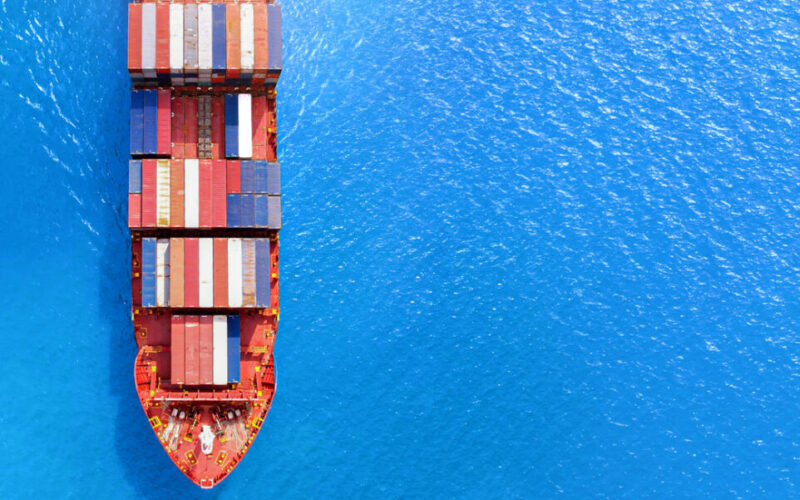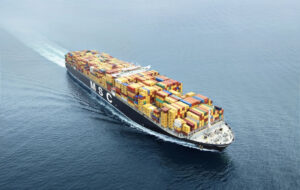June 2025 was a pivotal month for the maritime sector, shaped by rising port congestion, regulatory shifts, tech innovation, and geopolitical tensions.
Global supply chains were pushed to the brink, with delays at major ports surging by up to 300 per cent, while persistent regional conflicts and security threats disrupted key shipping lanes. In response, ports and carriers ramped up investment in automation and AI-driven systems to restore resilience and safeguard trade flows.
Here’s what drew industry-wide attention in ports and shipping this June.
Geopolitical tensions and trade uncertainty persist
Geopolitical tensions continue to disrupt global maritime trade, with rising friction between Iran and Israel adding uncertainty to key shipping routes, particularly around chokepoints like the Strait of Hormuz. These pressures compound existing congestion and operational challenges in the region.
Meanwhile, US and Chinese officials have outlined a tentative trade framework following talks in London. The agreement addresses sensitive issues, including China’s restrictions on rare earth exports and the US’s controls on semiconductor design software and aircraft components.
However, final approval from both governments remains uncertain, with a 10 August deadline to avert renewed tariffs.
Global port congestion reaches crisis levels
June has seen an unprecedented surge in port congestion worldwide, with delays increasing by up to 300 per cent compared to normal levels.
According to Tradlinx data, 96 per cent of major container ports are currently facing operational disruptions, with vessel wait times exceeding 10 days at critical hubs such as Rotterdam, Singapore, Cape Town, and Ningbo-Zhoushan.
Contributing factors included labour strikes, adverse weather, infrastructure bottlenecks, and persistent supply chain imbalances. With wait times exceeding 10 days at ports like Singapore, Cape Town, and Ningbo-Zhoushan, stakeholders warn that disruptions may extend well into the summer.
Rising safety and security risks disrupt key shipping lanes
Safety and security concerns are mounting across critical maritime corridors amid escalating regional tensions and operational risks.
On 9 June, a fire broke out aboard the Singapore-flagged Wan Hai 503 approximately 80 kilometres southwest of Azhikkal, India. Indian authorities successfully towed the vessel further offshore to contain the blaze and mitigate environmental risks.
Persistent GPS jamming in the Strait of Hormuz, where hundreds of incidents have been reported, continues to pose serious navigational risks, underscoring the increasing vulnerability of global shipping lanes to geopolitical instability and electronic interference.
June 2025 highlighted the mounting pressures on global maritime trade, from record congestion and geopolitical tensions to rapid digital shifts. As disruptions persist, resilience will depend on adaptability, innovation, and global coordination.
Digitalisation and automation accelerate in port operations
Digital transformation and automation acceleration continue to be a major focus in June, with ports worldwide adopting new technologies to improve efficiency and resilience amid ongoing challenges.
Maersk launched the Trade & Tariff Studio, a new AI-powered platform designed to centralise and automate customs and tariff management for global cargo owners. Aimed at tackling rising tariff complexity and compliance risks, the solution offers real-time updates, cost optimisation, and greater visibility, initially rolling out in the US from 28 June, with global deployment to follow in August.
Rijeka Gateway port in Croatia partnered with CONROO to deploy a fully digital, smartphone-enabled truck visit system. This innovation streamlines gate processes, reduces paperwork, and improves turnaround times by enabling truck drivers to manage appointments and documentation digitally.
In a landmark development for the UK’s maritime sector, Verizon Business and Nokia have launched one of Europe’s largest private 5G networks across Thames Freeport’s key logistics, manufacturing, and innovation hubs, including DP World London Gateway, Port of Tilbury, and Ford Dagenham.
As ports embrace new technologies, industry leaders stress that digital innovation must ultimately make logistics life easier for people. Tools that automate routine decisions, provide predictive analytics, and support human intelligence are already helping to reduce uncertainty, improve efficiency, and amplify the value of human expertise within the supply chain.








